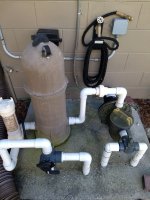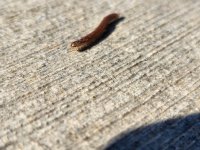Every owner of an IntelliChlor knows, or should know, how to check Usage Hours. Like this, from the owner manual:
IntelliChlor SCG Usage Hours Meter
The IntelliChlor® SCG provides a built-in cell “usage hours” meter that reports how many hours IntelliChlor has been operating. The IntelliChlor SCG is designed to operate for approximately 10,000 hours before replacement is needed or roughly five (5) years of average use.
To access the system status mode:
- Press and hold the MORE button for three (3) seconds until the lights scroll across the unit.
- One (1) of the five (5) Sanitizer Output LED indicators (20%, 40%, 60%, 80% and 100%) will be lit,
indicating the hours of usage. The Output LEDs are as follows:
- 2000 hours (20% LED on)
- 4000 hours (40% LED on)
- 6000 hours (60% LED on)
- 8000 hours (80% LED on)
- 10,000 hours (100% LED on)
But I always seem to struggle with how Pentair manuals and instructions are written.
I performed the test, and I just got one LED (20%). I think that means I have only
used 2000 hours (or 20%) of my IC.
Not that I only have 20% life left. And that I still have ~8000 hours of chlorine generation to look forward to. Correct?
Put another way, if I ever see all the LEDs lit up (100%), that is signaling at, or near, end-of-life.
==============
Sidebar: If I had such an Hours Meter, my brain would surely be showing five LEDs...



















